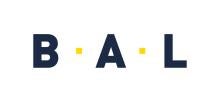Since 2021, the semiconductor industry has announced nearly $80 million in new investments in the United States. Congress passed the CHIPS and Science Act of 2022 to strengthen semiconductor manufacturing, development and research and design in the United States. Most recently, on July 9, 2024, the Biden-Harris Administration announced an investment of up to $1.6 billion to establish and accelerate domestic capacity for semiconductor advanced packaging.
Importantly, the significant demand for high-end chips is the result of the recent surge of research and applications in artificial intelligence (AI). Advancements in AI research is centered on the use of high-performance chips to construct computing platforms. With the federal funding incentives and an increasing demand for chips, the U.S. semiconductor industry is positioned for high-stakes competition worldwide.
Highly skilled talent for a high-demand industry
The semiconductor industry relies on a highly specialized combination of education, skills and expertise. Identifying key talent plays a pivotal role in this rapidly evolving industry. A shortage of skilled professionals could lead to delays or hinder the full utilization of invested capital.
Companies in the semiconductor industry are in a race to attract and retain talent to ensure their projects progress as planned to secure their market share and further invest in new research areas. As such, companies must be strategic in global workforce planning. This includes ensuring that their foreign national employee population maintains stable and secure options for U.S. employment authorization.
While there is a broad range of U.S. work permit categories, these are some of the most common visa classifications to hire highly skilled foreign national talent into the semiconductor industry.
H-1B specialty occupation visas
H-1B visas are the most sought visa type among semiconductor companies, including but not limited to the following occupations: electrical engineers, electronics engineers, industrial engineers, software developers and logistics engineers.
The H-1B program permits employers to temporarily employ eligible foreign workers for a maximum of six years. One of the significant benefits of the H-1B visa is the possibility of extending the H-1B status beyond the statutory six-year limit if the foreign worker has reached certain milestones in the green card application process.
However, noted limitations to the H-1B visa program are timing and availability. H-1B visas are subject to a registration process and a lottery system. Employers that are interested in registering their employees in the H-1B lottery must plan ahead and implement contingency planning in the event the employee is not selected in the lottery.
L-1 intracompany transfer visas
The second most common visa type, particularly for global semiconductor companies, is the L-1 visa. The L-1 visa category provides opportunities for U.S. employers with qualifying international offices to transfer employees in either managerial (L-1A) or specialized knowledge (L-1B) positions from a foreign qualifying entity to their U.S. entity. The qualified employee must have at least one year of managerial or specialized knowledge experience with the foreign entity within the three years immediately preceding the filing of the L-1 petition.
For instance, companies may utilize the L-1 visa for an employee to transfer semiconductor device fabrication technology knowledge from a foreign entity to the U.S. entity. Companies also tend to transfer managers in different time zones to the U.S. to better manage their U.S. teams against tight project completion deadlines.
The L-1A visa can be renewed for up to seven years. On the other hand, the L-1B visa has a five-year limit. Engineers in the L-1B category may gain managerial responsibilities during their employment in the U.S. They are permitted to amend their status to L-1A to benefit from the additional two years of employment authorization. Companies who wish to sponsor their L-1 employees for a green card tend to start the process early, as it can take several years depending on the employee’s country of birth and visa preference category.
Nationality-specific nonimmigrant visas
Pursuant to bilateral agreements between the U.S. and another country, certain nationalities are eligible for temporary nonimmigrant visas.
- H-1B1 for citizens of Chile and Singapore. The H-1B1 visa shares many common eligibility factors with the H-1B visa. However, unlike H-1B, H-1B1 does not have a six-year limitation, but sponsoring employers can only seek extensions in one-year increments.
- E-3 for Australian citizens. Similar to the H-1B visa, the proposed U.S. position must require a bachelor’s degree (or its equivalent) at a minimum. The six-year limit does not apply to E-3 visas. Sponsoring employers can seek extensions of up to three years indefinitely.
- TN for citizens of Canada or Mexico. The TN visa has a limited list of professional classifications. To qualify for TN status, the proposed U.S. job must fit into one of the listed classifications. The most common professional classification for companies in the semiconductor industry is “engineer.” TN visa status is issued for up to three years and can be extended indefinitely.
O-1 “extraordinary ability or achievement” visas
In general, individuals demonstrating extraordinary ability in business, science, education, art or athletics may qualify for an O-1 visa. Employers in the semiconductor industry tend to pursue this option for their engineers who have an advanced degree(s) and distinguished achievements, including published journal articles, peer review for academic journals, national or international awards and/or employment in a critical or essential capacity for distinguished organizations.
Employers may request up to three years initially and may extend the petition indefinitely in one-year increments. Due to the high legal standard as well as the significant required evidence for an O-1 visa, the preparation process is long and labor intensive. As such, employers should plan accordingly.



 />i
/>i

